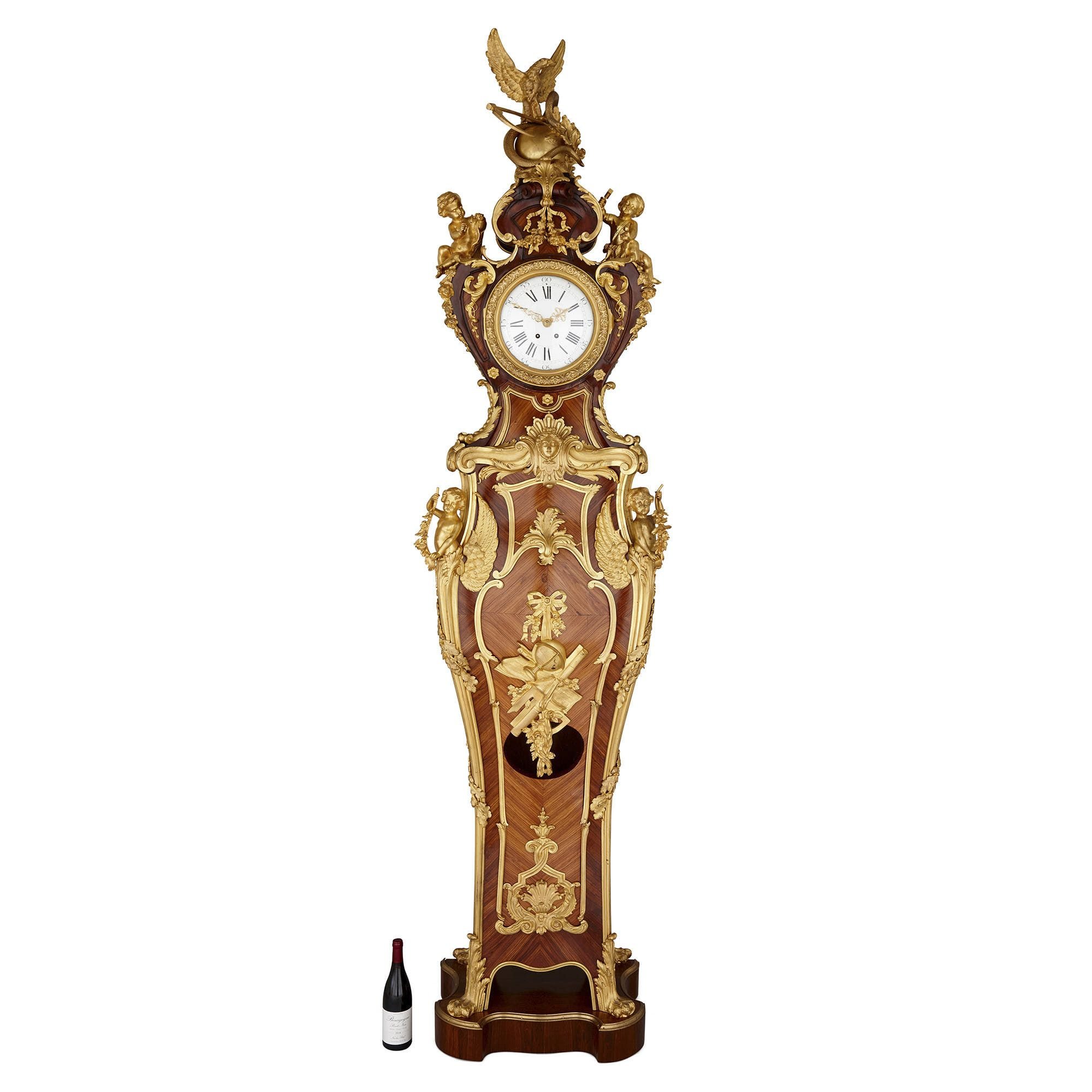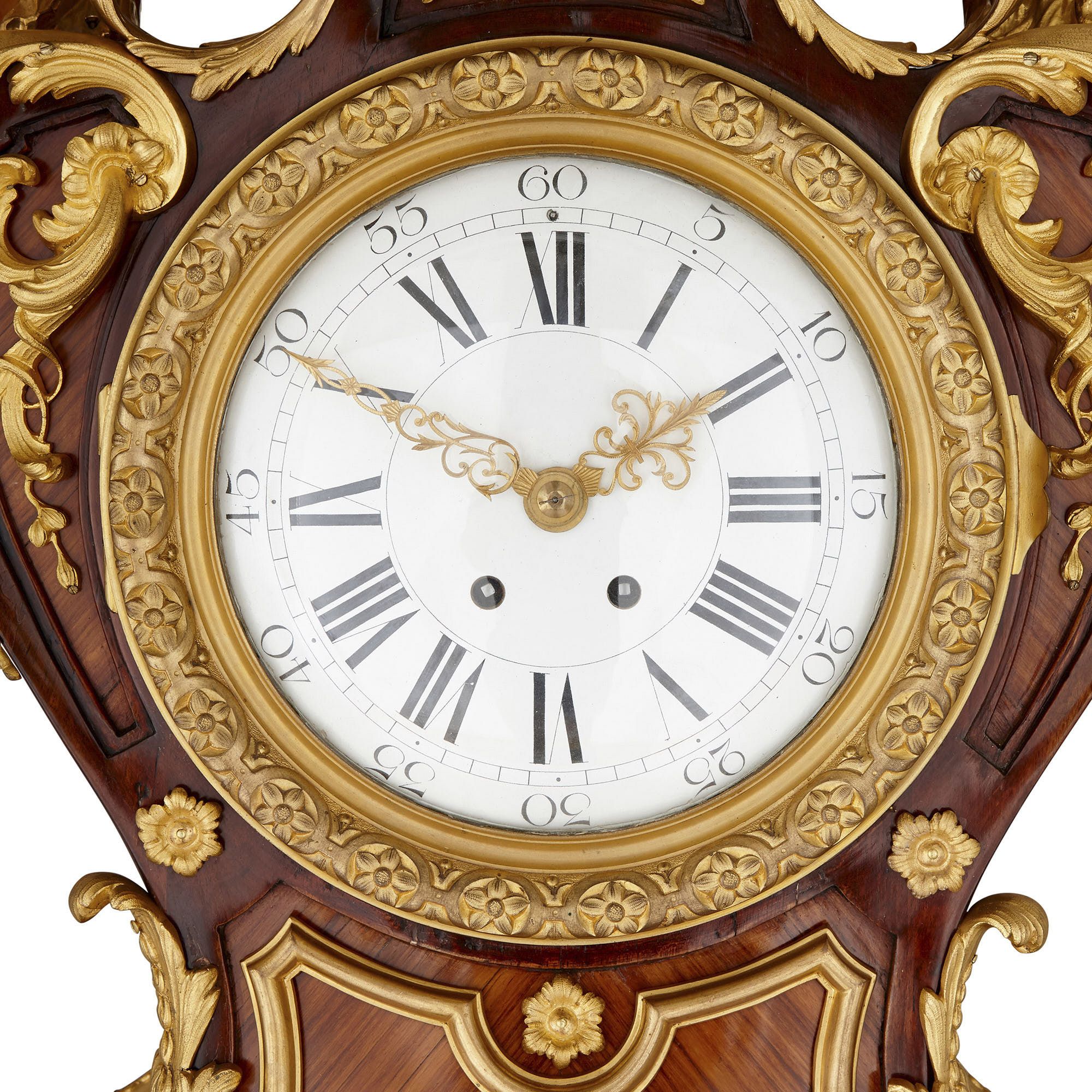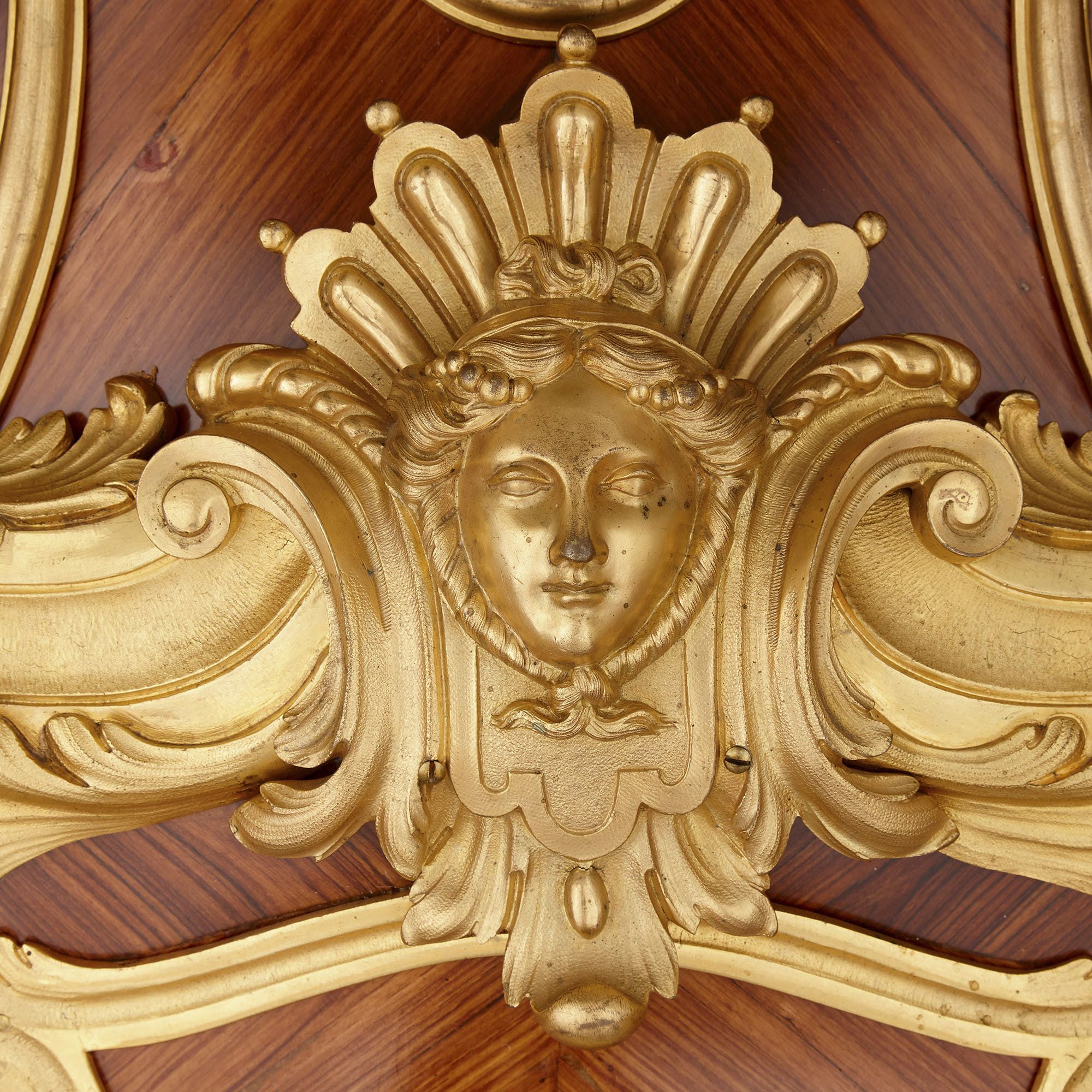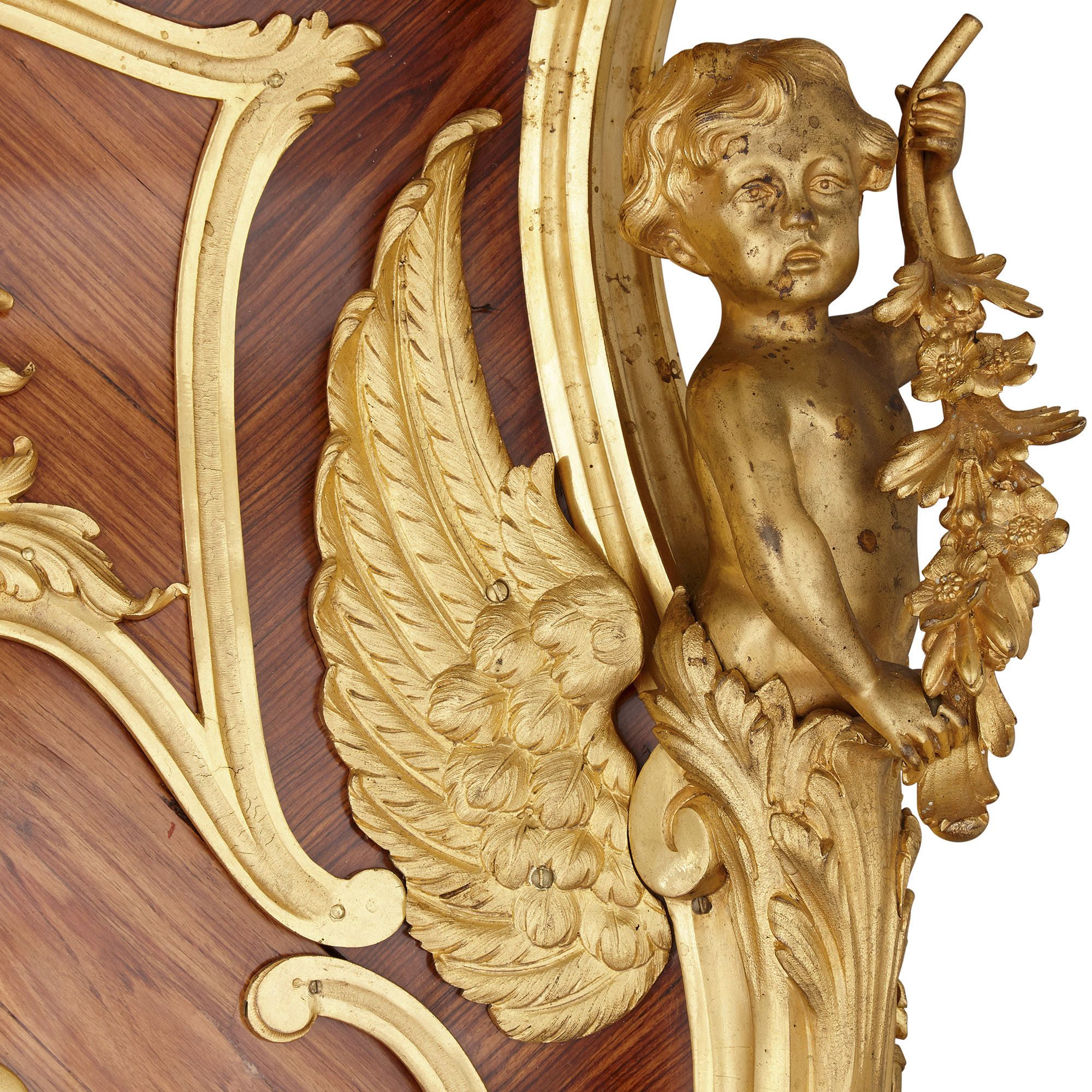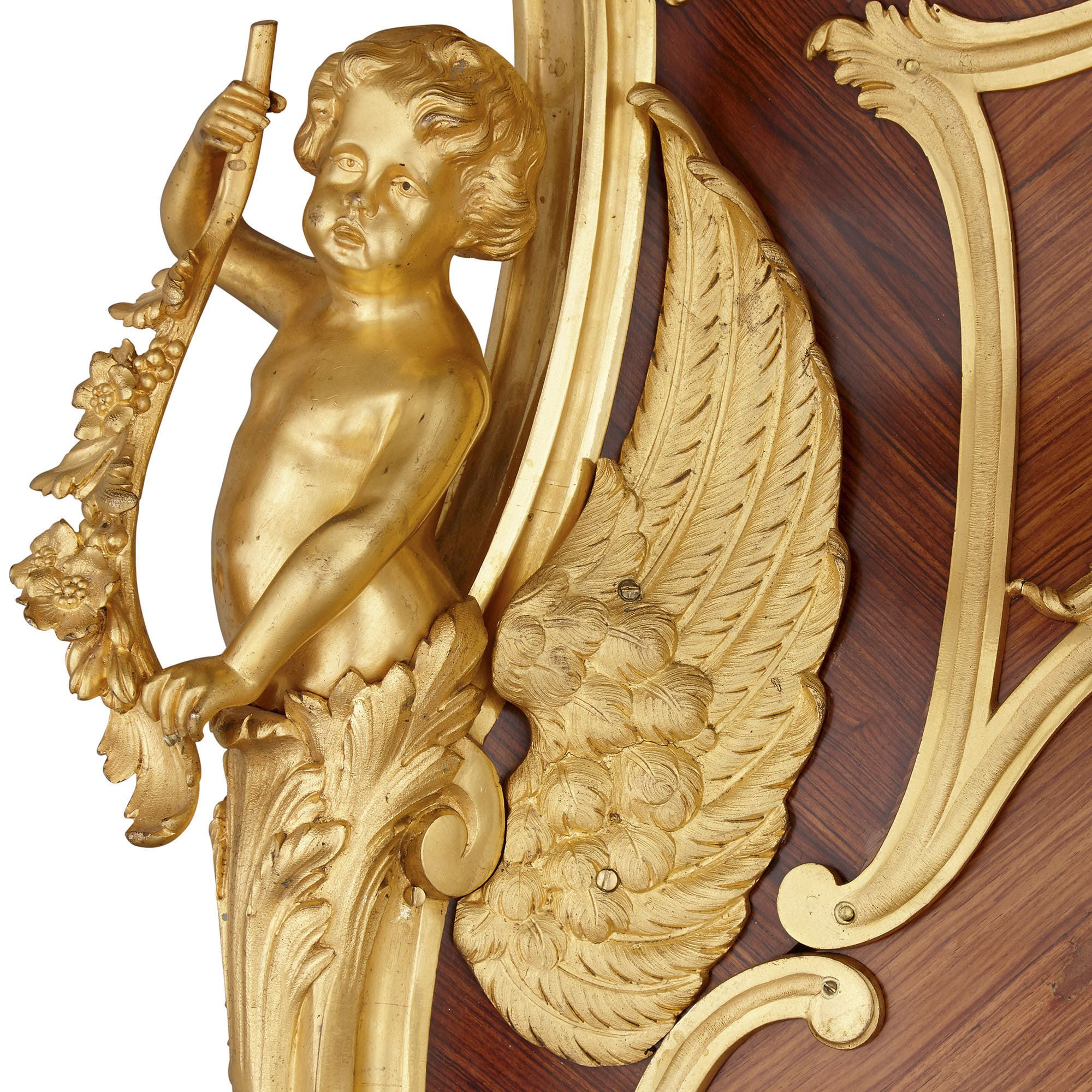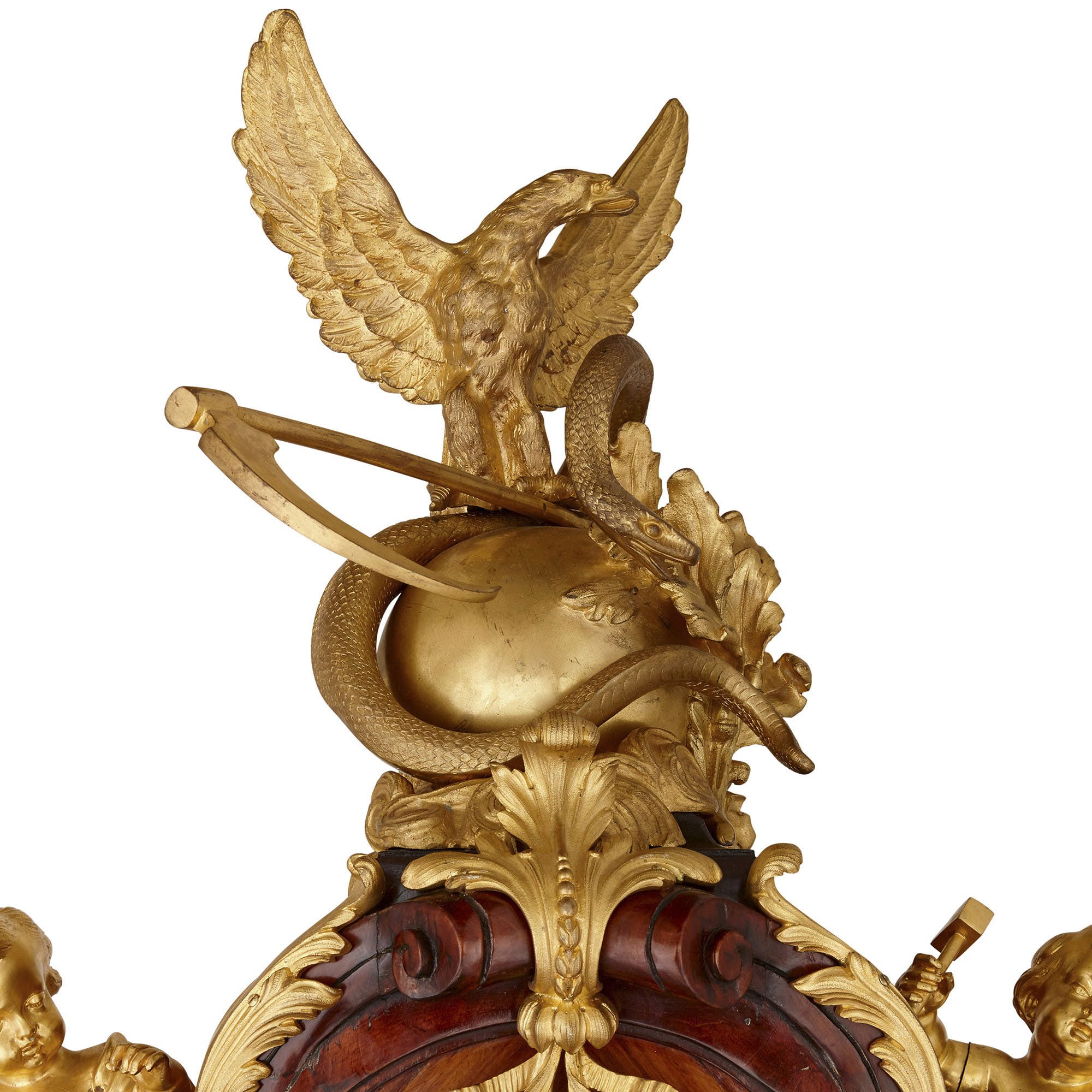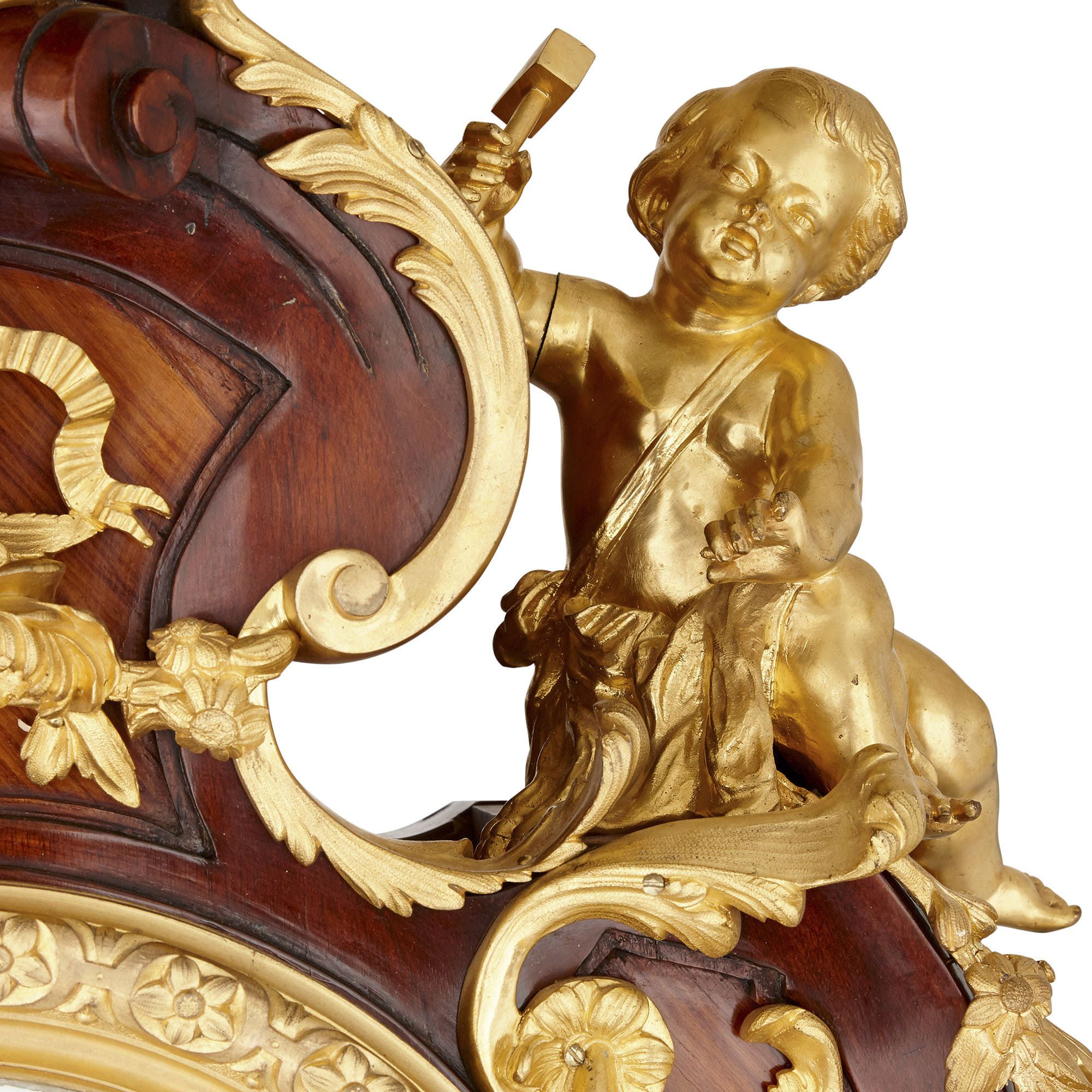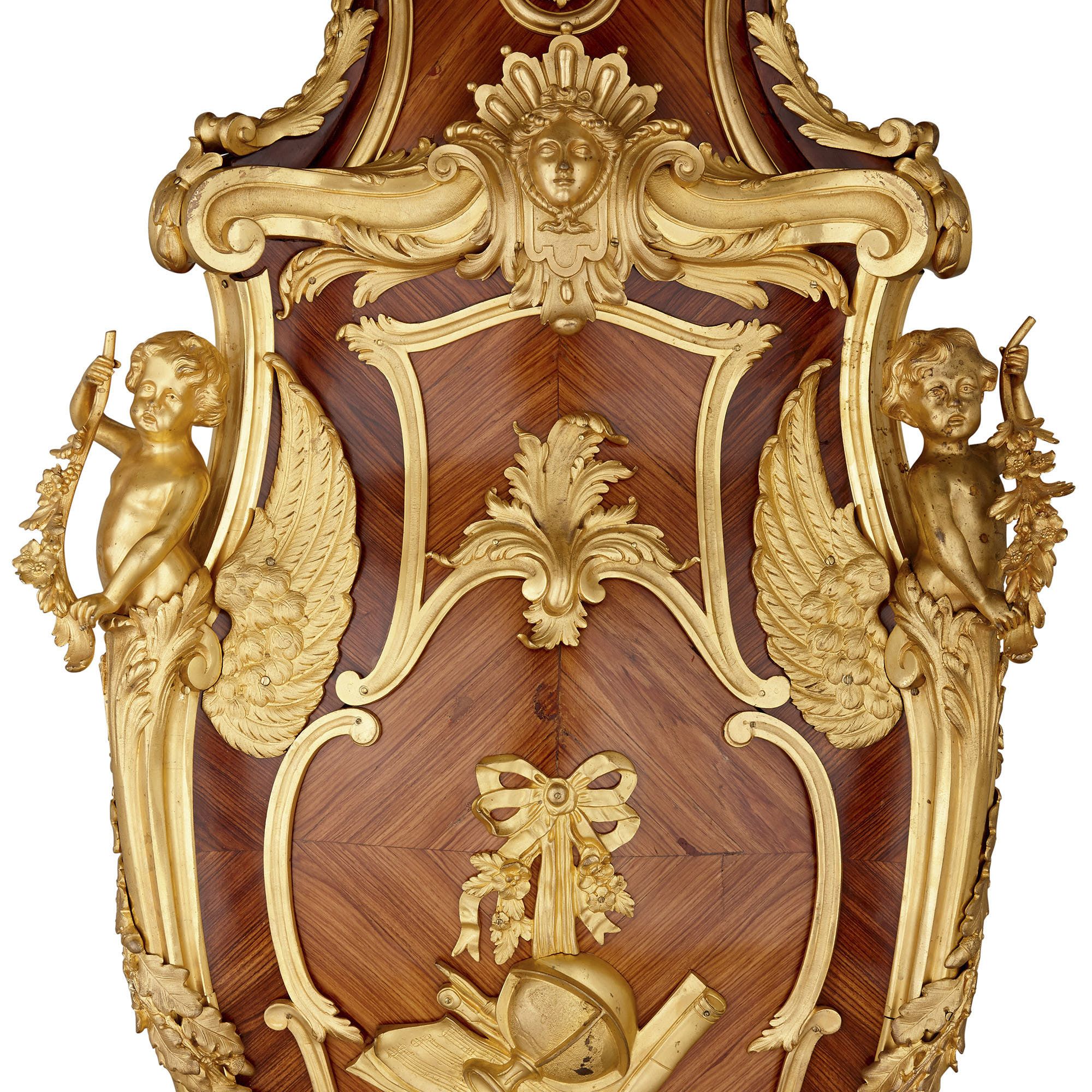This superb kingwood and tulipwood longcase clock is of tall violoné form and is surmounted by a finely wrought ormolu eagle, scythe, and serpent atop a globe flanked by two cherubim. The circular white enamel dial below is encompassed by a carved ormolu rim, while the remainder of the case—finished with fine parquetry of kingwood and tulipwood—is embellished with ormolu mounts in the form of stylised acanthus scrolls, bows, cherubim, and classicising masks. The case is raised by ormolu paw feet atop a wooden platform. The quality of the parquetry and ormolu is superb, demonstrating the best of early 20th Century French craftsmanship.
This clock, known as a régulateur de parquet, is an early 20th Century interpretation of the flamboyant Régence style of the early 18th Century. There are, however, later additions, such as the Neoclassical cresting, which combines several allegorical symbols, such as the eagle, which symbolises victory, the scythe, an attribute of Chronos, and the snake, a long-time symbol of eternity. The putty which flank the crown are allegories of the arts: one of architecture and one of sculpture, the two of which combine in the embodiment of this clock.
The maker of this piece, Ed. Kahn & Cie., produced some of the most celebrated 18th Century style models in France, with models after such important makes as Weiseiler, Gaudreaux, and Cressent.
The movement is stamped ‘1691/69’, while the ormolu is marked ‘Kahn’.





